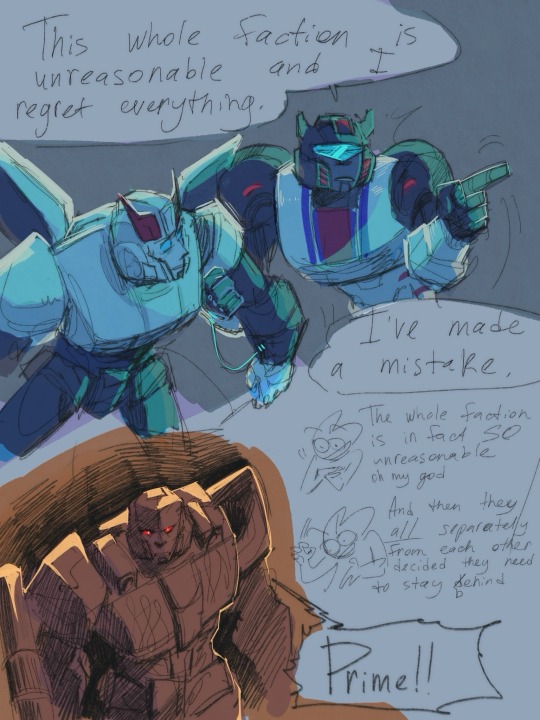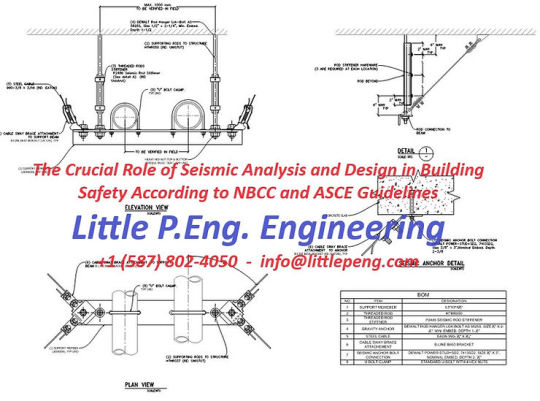#architectural components
Explore tagged Tumblr posts
Text
THE NEW CHAPTER OF MISTAKES ON MISTAKES UNTIL IS OUT AND YOU ALL KNOW WHAT THAT MEANS~~~~~~
Spoilers for ch 74 below >:)




Head in hands. And then they all happened to be self sacrificial idiots.
Infinitely delighted by the fact that Optimus automatically decided to catch whoever was falling and only look who that was afterwards. 100/10. Peak Optimus writing.
#fic fanart#momu fanart#maccadam#transformers#jazz#prowl#jazzprowl#optimus prime#megatron#momu is so good it made me draw megatron again✊ this is what true power looks like#teeny tiny doodle of Ratchet#I love momu Optimus beyond imaginable#usually I’m much more interested in him while he’s still Orion#because Optimus feels much more restricted in his thoughts and actions you know#in fics. I forgot to say I was talking about OP in fics#but in MOMU? I don’t even know how to describe it?? He is so comforting#he is all responsible and noble but also JUST the right amount of whimsical and chaotic 🤌#also I WAS NOT PREPARED for that level of architectural descriptions#my brain went ‘bruh we don’t fucking know all those words for space station structure components let’s give up how about that’#ahahahahahdjdjjfjf#not a critique by the way absolutely not#I’m gonna reread this fic at least one more time to catch more details and understand more of#uh#*vaguely waves hands*#this. everything.#because I’m 100% sure the whole story is FILLED with more layers I haven’t catch purely because I didn’t know what to look for
2K notes
·
View notes
Text




3 notes
·
View notes
Video
Maternal Body : Clay Impression and Fragmented Form by Russell Moreton Via Flickr: Auguries into the maternal body. Un-fired clay and silica sand. Constructed in-situ at the Yard, Winchester. A life-size record and memory of a human presence as a site for mutual introspection. Inspired in part from the novel " The Children of Men " by P D James. Artist Statement/Chapel Arts Residency Practitioner using the creative receptiveness of material together with the inclusion of drawing to harbour transits and passages of human presence, vulnerabilities centred around the human condition. My work adopts strategies which articulate a sense of absence and anonymity within the abandonment of the work to its location. I feel drawn to this registering of passage, encounter together with its farewell. The choice of materials gathered together implies a personal geography, with both an emotional and aesthetic sense of locality and place. The performative recording by physical means which renders itself as a trace of human presence, now becomes a vacant territory open for the consideration of others. My work continues to investigate this sense of material response with the performative trace of a human absences. The place-ment of these acts attempts to promote thresholds from which to reflect upon spatial, sociological and psychological conditions and perceptions. Currently working in clay, low fired to produce and promote a fragile vessel. This vessel is installed to act as a dwelling presence reverberating in a resting place. from which work is drawn into the human form to register a surface of absences resulting from past gestures and solitudes. Russell Moreton a visual artist uses simple gestures of drawn Human traces gathered and presented amongst natural materials. Exploring themes around the Human condition, vulnerability and abandonment. Materials are employed to further underpin our sense of place and time. The act and gesture of drawing adds a ephemeral mark amongst the materiality and locality of place. Currently using clay to register these themes, installing work Augury Vessel into Chapel Arts as part of their research residency programme.
#Work#architectural#ceramics#raw#clay#Augury vessel#human trace#sand#hole#sculpture#butades#pliny#origin#drawing#myth#boundary#lefebvre#children of men#contemporary practice#russell moreton#chora#movement#wavelength#record#register#imprint#residues#actions#intrinsic components of beauty#J.G.Ballard
3 notes
·
View notes
Text
"going outside" horseshoe theory
#like it's either hermitmoding or you know like actually interacting with the world#otherwise it's just ant spirals and pacing around in circles like a stressed animal#most people are doing the latter#and i mean it kind of metaphorically but you get it hopefully#well the collective unconscious has those stressed animal currents because well i think this is a kind of a fundamental thing#not all there is but a motif one of the component architectures#also i have begun to think about computer gaming - gpus - deep learning - neoteny - computing sort of web of connections#not much concrete to say yet. also i never elaborated on my aliens post from like two years ago. or any other things#but i will elaborate. someday they will teach me syntax. and i will write a book#maybe i should've gone into like film idk i could be cyberpunk/biopunk david lynch#/delusions of grandeur#but then i would not have the data or information so i would not have my ideas#does anyone who makes moving pictures want to collaborate with me that is listening and learning while i explain my ideas#come on cia guy...... i know you have connections
2 notes
·
View notes
Text
desperately trying to figure out what seafaring boats made by 1 inch ants would look like and how they would be made
#probably not super different from various human made boats in terms of shape#and theyd be fully reliant on sails for propulsion. no rowing would be possible#its the materials that are the biggest challenge bc they really cant be manipulating large tree trunks or etc#they Do build megastructures for metalworking and the architecture of their nests but its usually assembled by small components
21 notes
·
View notes
Text







Website : https://keystoneremodelingredmond.com/
Address : 7525 166th Ave NE, Redmond, WA 98052
Phone : +1 425-900-6254
We’re a family-owned construction firm specializing in home remodeling and renovation in Redmond, WA.
Business Email : [email protected]
#Bathroom Remodeling#Garage conversion#Architectural Plans#HVAC Systems and Components#Engineering plans#Concrete#Drywall#Demolition#Interior Designer#Backyard remodeling#Interior Painting#Artificial Turf#Hardscaping and Outdoor Design#Carport#Room addition#Ceiling#Attic#Wall Insulation#Wood or Composite Wood#Electrical Fixtures Installation#Electrical Rewire#Exterior Painting#Kitchen Remodeling#hardwood#laminate#tile#carpet#Siding#Roofing#Windows and Doors
2 notes
·
View notes
Text
hbase architecture is a distributed, scalable, NoSQL database built on Hadoop to handle large amounts of structured data. Its architecture consists of Region Servers that manage data regions, a Controller Server for coordination, and HDFS for storage. It supports real-time read/write access, enabling efficient handling of big data applications. Check here to learn more.
0 notes
Text
Exploring Component-Based Architecture in NextJS
Unlocking the Power of Component-Based Architecture Component-based architecture is a powerful approach in modern web development that allows for modular, reusable, and scalable code. With frameworks like NextJS, developers can leverage the benefits of component-based architecture to build efficient and maintainable web applications. What is Component-Based Architecture? In component-based…
#component-based architecture#component-driven#efficient frontend development#Frontend Development#NextJS#NextJS component-based architecture#React#scalable web development#web development
0 notes
Text
Beryllium Copper Sheets & Plates Exporters

#Stainless steel#metal fabrication#corrosion-resistant#kitchenware#appliances#construction materials#durable#rust-proof#industrial applications#stainless steel grades#maintenance#cleaning#sustainable materials#architectural design#cookware#utensils#sanitary equipment#marine applications#automotive components#aerospace materials
0 notes
Text
The Crucial Role of Seismic Analysis and Design in Building Safety According to NBCC and ASCE Guidelines
Seismic analysis and design are fundamental aspects of structural engineering that ensure buildings and their non-structural components can withstand the forces generated by earthquakes. These practices are not just essential for the safety and integrity of structures but are also mandated by comprehensive guidelines and codes such as the National Building Code of Canada (NBCC) and the American Society of Civil Engineers (ASCE). This article delves into the importance of seismic analysis and design for buildings and non-structural components, guided by the principles set forth in the NBCC and ASCE.
Understanding the Risks
Earthquakes pose a significant risk to life and property. The unpredictable nature of seismic events, combined with the potential for catastrophic damage, underscores the need for rigorous building standards. Seismic analysis and design aim to mitigate these risks by ensuring buildings can endure seismic forces without collapsing, thus safeguarding occupants and minimizing economic losses.
NBCC and ASCE Guidelines: A Benchmark for Safety
The NBCC and ASCE have established benchmarks for seismic safety in the construction industry. The NBCC, applicable in Canada, and the ASCE's standards, widely adopted in the United States and internationally, provide a framework for assessing seismic risks and implementing necessary design and construction practices.
Seismic Analysis
Seismic analysis involves evaluating how a structure responds to earthquake-induced forces. This process helps engineers understand potential stress points and the overall behavior of a building during seismic events. Both the NBCC and ASCE recommend detailed analysis methods, including linear dynamic analysis, nonlinear dynamic analysis, and modal response spectrum analysis, among others. These methodologies help in designing structures that are not only compliant with safety standards but also economically viable.
Design Considerations
The design phase is critical in integrating seismic resilience into buildings. The NBCC and ASCE guidelines emphasize the importance of ductility, redundancy, and energy dissipation in structural elements. Ductility allows parts of the structure to deform under seismic loads without failing, while redundancy ensures that if one part of the structure fails, others can take over the load-carrying responsibilities. Energy dissipation mechanisms are incorporated to reduce the energy transferred to the structure during an earthquake, thereby limiting damage.
Non-Structural Components
Seismic safety extends beyond the structural elements of a building. Non-structural components, including mechanical, electrical, and plumbing systems, as well as architectural elements like ceilings, partitions, and facades, play a crucial role in building functionality and occupant safety. The NBCC and ASCE guidelines require these components to be anchored and braced appropriately to prevent detachment or collapse, which could cause injury or block egress paths during an earthquake.
The Path Forward

In conclusion,
the seismic analysis and design of buildings and their non-structural components, as per the standards of the NBCC and ASCE, are indispensable in the pursuit of creating earthquake-resilient communities. These practices embody a proactive approach to disaster mitigation, emphasizing the critical importance of preparedness and the implementation of engineering solutions that protect both people and their environments.
Tags:
NBCC
ASCE
structural integrity
structural engineering
earthquake resilience
energy dissipation
building codes
seismic design
non-structural components
mechanical systems
disaster preparedness
plumbing systems
ductility
architectural elements
seismic safety standards
seismic risks
anchoring
bracing
electrical systems
redundancy
building safety
linear dynamic analysis
structural components
seismic analysis
modal response spectrum analysis
nonlinear dynamic analysis
earthquake mitigation
seismic guidelines
occupant safety
earthquake-induced forces
Seismic Bracing Experts
Located in Calgary, Alberta; Vancouver, BC; Toronto, Ontario; Edmonton, Alberta; Houston Texas; Torrance, California; El Segundo, CA; Manhattan Beach, CA; Concord, CA; We offer our engineering consultancy services across Canada and United States. Meena Rezkallah.
#NBCC#ASCE#structural integrity#structural engineering#earthquake resilience#energy dissipation#building codes#seismic design#non-structural components#mechanical systems#disaster preparedness#plumbing systems#ductility#architectural elements#seismic safety standards#seismic risks#anchoring#bracing#electrical systems#redundancy#building safety#linear dynamic analysis#structural components#seismic analysis#modal response spectrum analysis#nonlinear dynamic analysis#earthquake mitigation#seismic guidelines#occupant safety#earthquake-induced forces
0 notes
Text
Event-Driven Design Demystified: Concepts and Examples
🚀 Discover how this cutting-edge architecture transforms software systems with real-world examples. From e-commerce efficiency to smart home automation, learn how to create responsive and scalable applications #EventDrivenDesign #SoftwareArchitecture
In the world of software architecture, event-driven design has emerged as a powerful paradigm that allows systems to react and respond to events in a flexible and efficient manner. Whether you’re building applications, microservices, or even IoT devices, understanding event-driven design can lead to more scalable, responsive, and adaptable systems. In this article, we’ll delve into the core…

View On WordPress
#Asynchronous Communication#Decoupling Components#E-commerce Order Processing#Event Broker Paradigm#Event Sources and Consumers#Event-driven architecture#Event-Driven Examples#Event-Driven Paradigm#Event-Triggered Workflows#Microservices and Events#Middleware in Event-Driven Design#Modular Development#Reactive Systems#Real-Time Responsiveness#Scalable Software Systems#Smart Home Automation#Social Media Notifications#Software Design Patterns#System Event Handling#User Experience Enhancement
1 note
·
View note
Text
Btw the reason why he looks like that is because he's dressed up as your guide. You promised to join him in touring 10 ruins during his birthday.
You definitely take an entire month per area because he'll go on an hour long discussion for literally every architectural component in a ruin. He could condense it to ten minutes per element, but he's just making up excuses to stay with you longer. 🤭
He also gives you a complimentary gargoyle merch every night you join him in an excursion!
"Thank you for the most pleasant date-- company during this trip tonight. It certainly was educational. If you've even an ounce of interest to try out more of our activities, then you need only sign this registration form. I look forward to seeing you again tomorrow."

#UGH#my love#I can't wait for you#twisted wonderland#malleus draconia#ventique rambles#malleus x reader
2K notes
·
View notes
Text
i think people aren't talking more about the iterator interior (not the can) aesthetic, it's insane and absurdly lovecraftian in a very interesting way, it's genuinely so good. i wish more games had fucking MASSIVE robots you can climb inside and hear incomprehensible sounds of communication and see blinking lights with random metal components strewn about, and architecture so hostile and irregular yet just navigable enough that you question if you were meant to even be here in the first place, or even if it was meant for some interloper like you to traverse.
iterator cool :3
#rain world#rain world iterator#god... games need more dubious robots and/or heavily sci-fi industrialized regions
848 notes
·
View notes
Text
I’ve been thinking a lot about fandom recently, both as someone who has engaged with it regularly for over a decade on various platforms and also as someone who has increasingly become disenchanted with those spaces. Not only because of pervasive issues of (especially anti-Black) racism, misogyny, transphobia/homophobia, and the like, but the particular way those things take shape within fandom.
At the most basic level I think fandom has a fundamental methodological problem with the way it approaches texts, be they shows, books, movies, etc. What I mean is that people almost invariably approach fandom at the level of character, often at the level of ship - your primary way of viewing a text is filtered through favourite characters and favourite relationships, as opposed to, say, favourite scenes, favourite themes, favourite conflicts.
This is reinforced through the architecture of dominant platforms that host fan content, particularly AO3 - there are separate categories for fandom, character and ship, and everything else is lumped together in “Additional Tags.” You cannot, for example, filter for fics on AO3 by the category of “critical perspective” or “thematic exploration”. There is no dedicated space for fan authors to declare their analytical perspective on the text they are writing about. If an author declares these things, they do so individually, they must go out of their way to do so, because there are no dedicated or universally agreed-upon tags to indicate those things, and if your fanfiction has a lot of tags, that announcement of criticality gets mushed together in a sea of other tags, sharing the same space with tags like “fluff and angst” or “porn without plot.” Perhaps one of the few tags closest to approaching this is the tag “Dead Dove: Do Not Eat,” which doesn’t indicate perspective or theme but rather that there is, broadly, some kind of “problematic content” contained therein - often of a sexual nature, frequently as a warning about “bad” ships.
Now this is not an inherent problem, as in, it is not inherently incorrect to approach a text and primarily derive pleasure from it by focusing on a given character or relationship. And I think a lot of mainstream media encourages (even requires) audiences to engage with their stories at these character- and ship-levels. The political economy of the production of art (one which is capitalistic, one that seeks to generate comfort, titillation, controversy, nostalgia, or shock for the purposes of drawing in viewership, one that increasingly pursues social media metrics of “engagement” and “impressions”, one that allows for the Netflix model of making two-season shows before cancelling them, as well as a whole host of other things) enforces a particular narrative orthodoxy, one that heavily focuses on the individual interiority of specific characters, one that is deeply concerned with the maintenance of white bourgeois middle class values of property ownership, the nuclear family, normative heterosexual sexuality and gender, settler-colonial ideas about community and environment, etc. If you do not care about the familial drama surrounding Shauna cheating on her husband in Yellowjackets, for example, because you think the institution of monogamous marriage and the nuclear family is stupid and violent and heternormative, then you will have a difficult time engaging with the show in general. We exist within a deeply normative (and frequently reactionary) media environment that encourages us to approach art in a particular way, one that privileges the individual over other narrative components (settings, themes, conflicts, ideas, political and moral perspectives, structure, tone, etc).
All of which culminates in priming fans to engage with art at these levels and these levels alone, even when that scope is deeply inappropriate. A standout example I recently encountered was browsing the fandom tags on tumblr for the movie Prey - a movie that recontextualises the original Predator film by setting it in colonial America to make the argument that the horrific violence of white colonists and imperial soldiers is identical to the violence we see the Predator do to human beings. It is a movie that makes the argument that, despite this alien monster running around killing people, the villains of the franchise are these occupying soldiers and settlers, an alien force who themselves have just as little regard for (indigenous) human life.
And when browsing the tags on tumblr, what I found was dozens upon dozens of horny posts about how hot the predator monster was. Certainly there were discussion of the film’s narrative, and these posts got a good amount of notes, but the tags were heavily dominated with a focus on the Predator itself. People were engaging with this film not as a solid action movie with interesting and compelling anti-colonial themes, but as a way to be horny about a creature that is, ironically, a stand-in for white settler indifference to (and perpetuation of) indigenous suffering. And if this is your takeaway from an extremely straightforward film with a very clear message, this is not merely a failure to comprehend the content of a text, this is something beyond it - a problem that I think is due in part to the methodological problem of approaching all texts as vessels for bourgeois interiority, individual but ultimately interchangeable expressions of sexuality, perhaps best-expressed by the term “roving slash fandom,” a phenomenon wherein fans will move from one fandom to the next in search of two (usually white, usually skinny) guys to draw and write porn of, uncaring of any of the surrounding context of the stories they are embedded in, and consequently dominating a large sector of fandom discussion.
This even gets expressed in the primary ideological battleground of fandom itself, the ridiculous partitioning of all fan conflict into “pro-“ and “anti-“ shipping compartments. Your stance on engagement with fandom itself historically was (and still is) always first filtered through one of these two labels, describing your fundamental perspective on all texts you engage with. And both of these two labels are only concerned with shipping, as if all disagreements about art can only be interpreted through the lens of what characters you think are acceptable to draw or write having sex. Nowhere in this binary is space to describe any other perspective you might take, what approaches you think are valuable when interacting with art, what themes or stories you think are worth exploring. It’s not just that the pro/anti divide is juvenile and overly-simplistic, it is a declaration that all fan conflict must be read through the lens of shipping and shipping only - the implication being that any objections raised, and criticisms offered, is ultimately just bitching about ships you don’t like.
Which, again, I think is a fundamental error of methodology. It leaves no space for people to discuss the political and moral content of a work, the themes of a piece of art, the thorny issues of representation not just as expressed through individual characters but entire worlds, narratives, settings, and themes. You are always hopelessly stuck in the quagmire of “shipping discourse,” and even rejecting that framework will inevitably get you labelled as either pro- or anti-ship anyway - and you will almost invariably be labelled an “anti” if you express any kind of distaste for the bigoted behaviour of fans or the content of the text itself, again reinforcing the idea that this is all just pointless whining online about icky ships you personally hate.
And this issue is best perhaps epitomised by reader insert fanfiction, circumventing any need for you to project onto a character by literally inserting yourself into fiction, primarily in order to write/read about a character you want to fuck. This then intersects in particularly disgusting ways with real world politics, such as reader insert fics about Pedro Pascal going with you to BLM protests. Even if this is (incredibly over-generously) interpreted as a very poor attempt at being “progressive,” it still demonstrates that many (white) fans are often incapable of thinking about anything outside of a character-centric perspective, quite literally centring themselves in the process, and consequently they think it’s totally appropriate to do things like that. The fact that this is also frequently a racist lens is not coincidental, because again, a chronic focus on (fictional) individuality prohibits any structural perspective from entering the discussion, which necessarily excludes a coherent or useful perspective on systemic issues, where people come to the conclusion that the topic of police brutality is little more than a fun stage to enact whatever romantic shenanigans you want to get up to with a hot guy.
I will stress, again, that it is not a moral sin to have a favourite character, nor is it bad to enjoy reading about two guys having sex in fanfiction. I enjoy and do those things, I engage with fandom often through a character-centric lens (see my url) - because it’s fun! But I think that this being the dominant mode of engagement inherently excludes and marginalises all other approaches, and creates a fandom space where the most valuable way to talk about media is to discuss which two characters you most enjoy imagining fucking each other
3K notes
·
View notes
Note
hi there! im a fan of your page 💕
can you give me the best studying techniques?
hi angel!! @mythicalmarion tysm for asking about study techniques 🤍 i'm so excited to share my secret methods that helped me maintain perfect grades while still having a dreamy lifestyle + time for self-care!! and thank you for being a fan of my blog, it means everything to me. <3
~ ♡ my non-basic study secrets that actually work ♡ ~




(don't mind the number formatting)
the neural bridging technique this is literally my favorite discovery!! instead of traditional note-taking, i create what i call "neural bridges" between different subjects. for example, when studying both literature + history, i connect historical events with the literature written during that time. i use a special notebook divided into sections where each page has two columns - one for each subject. the connections help you understand both subjects deeper + create stronger memory patterns!!
here's how i do it:
example:
left column: historical event
right column: literary connection
middle: draw connecting lines + add small insights
bottom: write how they influenced each other
the shadow expert method this changed everything for me!! i pretend i'm going to be interviewed as an expert on the topic i'm studying. i create potential interview questions + prepare detailed answers. but here's the twist - i record myself answering these questions in three different ways:
basic explanation (like i'm talking to a friend)
detailed analysis (like i'm teaching a class)
complex discussion (like i'm at a conference)
this forces you to understand the topic from multiple angles + helps you explain concepts in different ways!!
the reverse engineering study system instead of starting with the basics, i begin with the most complex example i can find and work backwards to understand the fundamentals. for example, in calculus, i start with a complicated equation + break it down into smaller parts until i reach the basic concepts.
my process looks like:
find the hardest example in the textbook
list every concept needed to understand it
create a concept map working backwards
study each component separately
rebuild the complex example step by step
the sensory anchoring technique this is seriously game-changing!! i associate different types of information with specific sensory experiences:
theoretical concepts - study while standing
factual information - sitting at my desk
problem-solving - walking slowly
memorization - gentle swaying
review - lying down
your body literally creates muscle memory associated with different types of learning!!
the metacognition mapping strategy i created this method where i track my understanding using what i call "clarity scores":
level 1: can recognize it
level 2: can explain it simply
level 3: can teach it
level 4: can apply it to new situations
level 5: can connect it to other topics
i keep a spreadsheet tracking my clarity levels for each topic + focus my study time on moving everything to level 5!!
the information architecture method instead of linear notes, i create what i call "knowledge buildings":
foundation: basic principles
first floor: key concepts
second floor: applications
top floor: advanced ideas
roof: real-world connections
each "floor" must be solid before moving up + i review from top to bottom weekly!!
the cognitive stamina training this is my absolute secret weapon!! i use a special interval system based on brain wave patterns:
32 minutes of focused study
8 minutes of active recall
16 minutes of teaching the material to my plushies
4 minutes of complete rest
the specific timing helps maintain peak mental performance + prevents study fatigue!!
the synthesis spiral evolution this method literally transformed how i retain information:
create main concept spirals
add branch spirals for subtopics
connect related concepts with colored lines
review by tracing the spiral paths
add new connections each study session
your notes evolve into a beautiful web of knowledge that grows with your understanding!!
these methods might seem different from typical study advice, but they're based on how our brains actually process + store information!! i developed these through lots of research + personal experimentation, and they've helped me maintain perfect grades while still having time for self-care, hobbies + fun!!
sending you the biggest hug + all my good study vibes!! remember that effective studying is about working with your brain, not against it <3
p.s. if you try any of these methods, please let me know how they work for you!! i love hearing about your study journeys!!
xoxo, mindy 🤍
glowettee hotline is still open, drop your dilemmas before the next advice post 💌: https://bit.ly/glowetteehotline

#study techniques#academic success#unconventional study methods#creative study tips#neural bridging#shadow expert method#reverse engineering study#sensory anchoring#effective studying#minimal study guide#glowettee#mindy#alternative learning#academic hacks#study inspiration#cognitive stamina#learning tips#study motivation#unique study strategies#self improvement#it girl energy#study tips#pink#becoming that girl#that girl#girlblogger#girl blogger#dream girl#studying#studyspo
172 notes
·
View notes
Text
Unlocking the Power of Component-Based Architecture in Angular
Unlocking the Power of Component-Based Architecture in Angular Are you tired of dealing with complex and hard-to-maintain Angular applications? Do you want to build scalable and modular frontend applications without compromising on code quality? If so, component-based architecture is here to rescue you! In this article, we will explore the benefits of component-based architecture and how you can…
0 notes